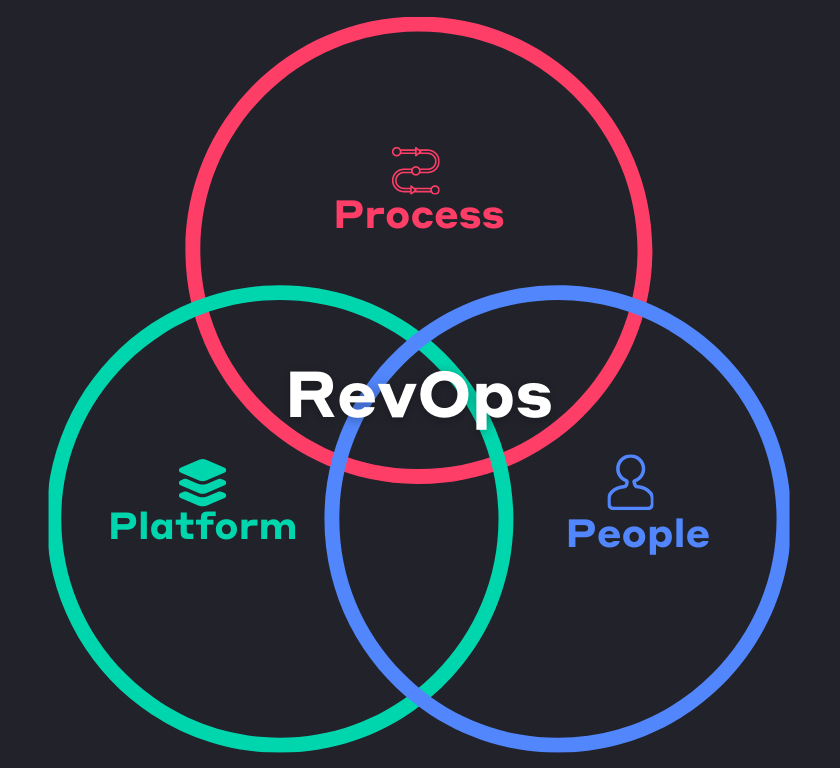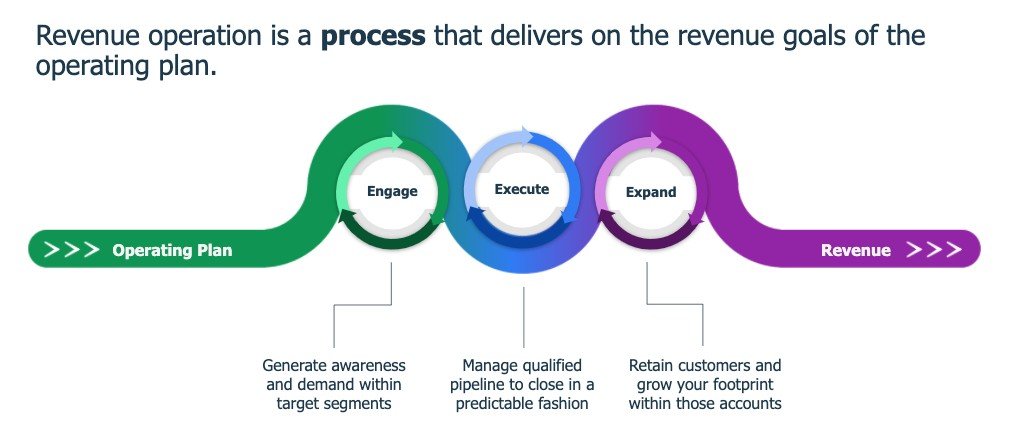Revenue Operations, or RevOps, is a relatively new term that refers to the integration and alignment of various functions within a company that are responsible for driving revenue. This includes sales, marketing, and customer success teams, as well as the systems and processes that support them. The goal is to improve the efficiency and effectiveness of these functions, as well as the communication and collaboration between them, in order to drive better results for the company.
RevOps is a holistic approach to managing and optimising the various teams, processes, and technology that contribute to a company's revenue. Aligning these functions and leveraging data and technology, businesses can gain a more complete understanding of their customers and identify opportunities for growth. This team can help businesses increase revenue, improve customer satisfaction, and reduce operational costs.
If you're a business leader looking to drive growth and increase revenue, it's worth considering implementing a such strategy as it can set your company up for long-term success.
There are three main components of revenue operations: people, processes, and technology.

With the integration and standardisation of these three components, businesses can achieve a more seamless and effective operation, leading to better results and increased revenue.
Implementing a RevOps strategy can bring numerous benefits to a business. Increased efficiency and effectiveness of revenue-generating teams can be achieved through aligning and optimising the various teams and processes involved in driving revenue. This can lead to improved performance and better results for the company.
Improved communication and collaboration between teams is another benefit, as it involves better communication and collaboration between the sales, marketing, and customer success teams, as well as other teams that support the revenue-generating functions of the business. This can lead to a more cohesive and effective operation, with teams working towards common goals and objectives.
RevOps also involves centralising and analysing data from across the revenue-generating teams, giving businesses a more comprehensive view of their customers. This can help identify new sales and marketing opportunities, improve customer retention, and increase cross-selling and upselling efforts.

Aligning the various teams and processes around a common set of goals and objectives is another key aspect, as it ensures that everyone is working towards the same outcomes and can better understand how their efforts contribute to the overall success of the company.
The ultimate goal is to drive better results for the company, and businesses that have successfully implemented it have seen increased revenue, improved customer satisfaction, and reduced operational costs.
If you're considering implementing a revenue operations strategy for your business, there are several steps you can take to get started.
There are also several challenges and considerations to keep in mind when implementing this new strategy. These may include:
Following such steps could potentially lead you to drive better results for your business and set your company up for long-term success.
In conclusion, Revenue Operations is a holistic approach to managing and optimising the various teams, processes, and technology that contribute to a company's revenue. With the combination of these components, businesses can achieve a more seamless and effective operation, leading to better results and increased revenue. The benefits of RevOps are numerous and include improved efficiency and effectiveness of revenue-generating teams, improved communication and collaboration between teams, a holistic view of customers through data management and analysis, aligned goals and objectives for all teams, and increased revenue, improved customer satisfaction, and reduced operational costs.
Implementing it is a complex and time-consuming process, but the benefits are clear. Unifying and optimising your functions that generate revenue, can drive better results for your business and set your company up for long-term success. If you're a business leader looking to drive growth and increase revenue, it's worth considering implementing a RevOps strategy. By doing so, you can ensure that your sales, marketing, and customer success teams are working together efficiently and effectively, helping you achieve your business goals and objectives.
Find out if MentorCruise is a good fit for you – fast, free, and no pressure.
Tell us about your goals
See how mentorship compares to other options
Preview your first month
